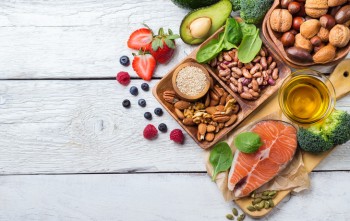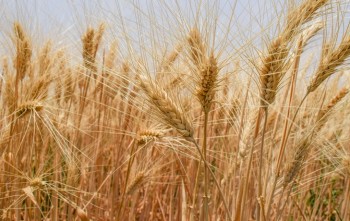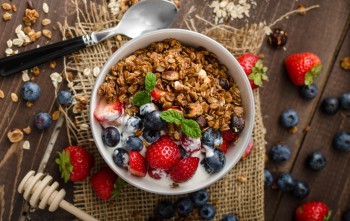All You Need to Know About Glycemic Index and Its Impact on Diet Patterns

Understanding the factors that influence the Glycemic Index (GI) is a crucial step in making intelligent food choices to maintain stable blood sugar levels and support a healthy eating pattern. Furthermore, it's important to emphasize that the context and combination of foods in a meal also play a central role in the impact of the GI. Combining foods with fiber, protein, and healthy fats can influence how the body responds to carbohydrates in the food.
Although it's ideal to choose foods based on the GI, it's also essential to consider nutritional value and overall impact on holistic health. For a clearer understanding, delve into the ins and outs of the GI below!
What Is the Glycemic Index?
The Glycemic Index (GI) is an evaluation system that measures how quickly the carbohydrates in food raise blood glucose levels. The GI scale ranges from 0 to 100, where foods with a high GI (above 70) rapidly raise blood sugar, causing a short-lived energy spike followed by a sharp drop. This can disrupt eating patterns and potentially trigger issues like insulin resistance.
Conversely, foods with a low GI (below 55) are absorbed more slowly, maintaining steadier blood sugar levels and providing sustained energy. Low-GI foods are generally derived from high-fiber sources like vegetables, whole grains, and certain types of fruits.
Introducing the GI into one's diet can help manage weight, control diabetes, and maintain energy balance. However, it's worth noting that the GI is not the sole factor to consider when selecting healthy foods.
Categories of Glycemic Index in Foods
The division of foods into categories based on the Glycemic Index (GI) is used to classify how quickly carbohydrates in specific foods affect blood sugar levels. Based on the GI scale ranging from 0 to 100, the categories are typically as follows:
- Low (GI < 55)
Foods in this category are digested slowly, promoting a gradual and stable increase in blood sugar. This avoids sharp energy spikes and helps maintain a sense of fullness for longer. Examples include non-starchy vegetables like broccoli, legumes, whole grains, and most fruits.
- Moderate (GI 56-69)
Foods in this category have a moderate effect on blood sugar increase. This may include foods like oatmeal, sweet potatoes, and certain fruits like bananas.
- High (GI ≥ 70)
Foods in this category are digested quickly, causing rapid blood sugar spikes. Consuming high-GI foods can disrupt blood sugar regulation and potentially lead to issues like insulin resistance. Examples include white bread, white rice, processed high-carb foods, and sugary foods.
Factors That Influence the Glycemic Index
- Carbohydrate Type
The type of carbohydrate in foods influences the GI. Simple carbohydrates like sugar tend to have a high GI, while complex carbohydrates like fiber and resistant starch tend to have a low GI.
- Food Ripeness
Foods that are more mature have a lower GI because the ripening process breaks carbohydrates down into forms that are harder to digest.
- Food Combination
Combining carbohydrates with protein, healthy fats, and fiber can lower the GI of food by slowing down carbohydrate digestion and absorption.
- Processing Level
Processed foods tend to have a higher GI because the processing can disrupt the natural carbohydrate structure, making it easier to digest.
- Food Acidity
More acidic foods tend to have a lower GI because acidity slows down digestion.
- Particle Size
Larger food particles tend to have a lower GI because they take longer to digest.
- Cooking Method
Cooking methods can affect the GI. For example, pasta that's cooked longer has a lower GI than pasta cooked briefly.
- Nutrient Combination
Nutrient combinations in foods, such as fiber and healthy fats, can slow down carbohydrate absorption and lower the GI.
- Food Variety
Varieties within food types can influence the GI. For example, some types of rice have a higher GI than others.
- Individual Factors
Individual responses to foods with the same GI can vary based on metabolism, activity levels, and genetic factors.
Glycemic Index Recommendations for Diabetics
For individuals with diabetes, paying attention to the Glycemic Index (GI) in food selection is crucial. It's advisable to choose foods with a low GI, such as non-starchy vegetables, whole grains, and high-fiber fruits, as these help maintain stable blood sugar levels. Combining carbohydrates with protein, fiber, and healthy fats can slow carbohydrate absorption and reduce blood sugar spikes.
Avoid high-carb processed foods with a high GI like white bread and sugary foods, and monitor portion sizes. Strict monitoring of eating patterns, blood sugar levels, and consultation with healthcare professionals are essential steps in managing diabetes while considering the daily GI of foods.
If You Don't Have Diabetes, Should You Pay Attention to the Glycemic Index?
Even if you don't have diabetes, paying attention to the Glycemic Index (GI) in your diet has its benefits. Choosing foods with a low GI can help maintain stable blood sugar levels and prevent rapid blood sugar spikes. This contributes to more consistent energy levels, helps keep you fuller for longer, and supports weight management.
Selecting low-GI foods can also help prevent the risk of insulin resistance and other metabolic conditions. However, remember that the GI is not the sole factor to consider in food selection. Balancing overall nutrition, fiber intake, protein, healthy fats, and consuming vegetables and fruits are still crucial components of maintaining a healthy eating pattern.
• Examples of Low Glycemic Index Foods
- Broccoli
- Cabbage
- Green beans
- Whole grains (like brown rice)
- Apples
- Pears
- Oranges
- Avocado
- Peas
- Zucchini
• Examples of Moderate Glycemic Index Foods
- Oatmeal
- Sweet potatoes
- Sweet corn
- Bananas
- Mangoes
- Basmati rice
- Whole wheat bread
- Couscous
- Potatoes
- Quinoa
• Examples of High Glycemic Index Foods
- White bread
- White rice
- French fries
- Instant noodles
- Refined sugar (e.g., candies and sweetened drinks)
- Cornflakes
- Refined wheat flour
- Potato chips
- Some fast food snacks
- High-sugar cereals
Keep in mind that the GI can vary based on cooking methods, food combinations, and individual factors. It's also important to consider overall nutritional aspects and balance when selecting your foods.
Yava as a Provider of Low Glycemic Index Foods / Snacks
Yava focuses on offering foods and snacks with a low Glycemic Index. Yava provides a variety of snacks, including granola, cashews, popcorn, and krispi puffs, made from natural ingredients sourced from various regions in East Indonesia.
These products are designed to maintain stable blood sugar levels and provide delicious, healthy alternatives. With natural ingredients, no sugar alcohols or artificial sugars, no preservatives, and no MSG, Yava brings a diverse range of flavors that are both nutritious and beneficial to your eating pattern. Always pay attention to nutritional information and consult healthcare professionals before making significant changes to your diet.
Looking for low-sugar foods? Discover low Glycemic Index products from Yava on


















